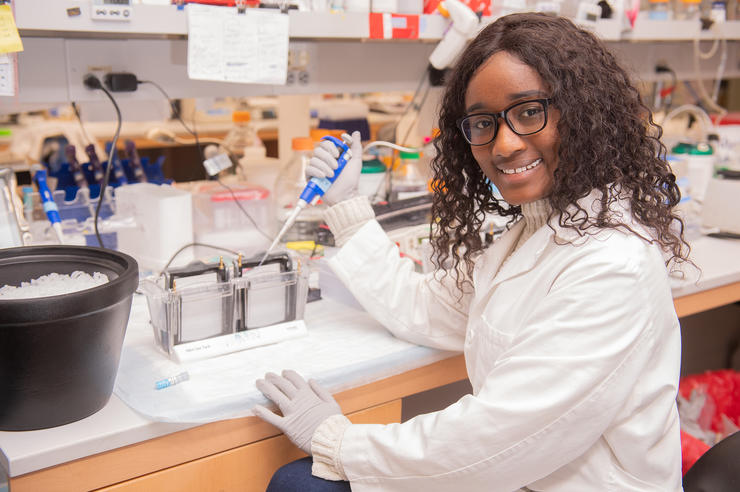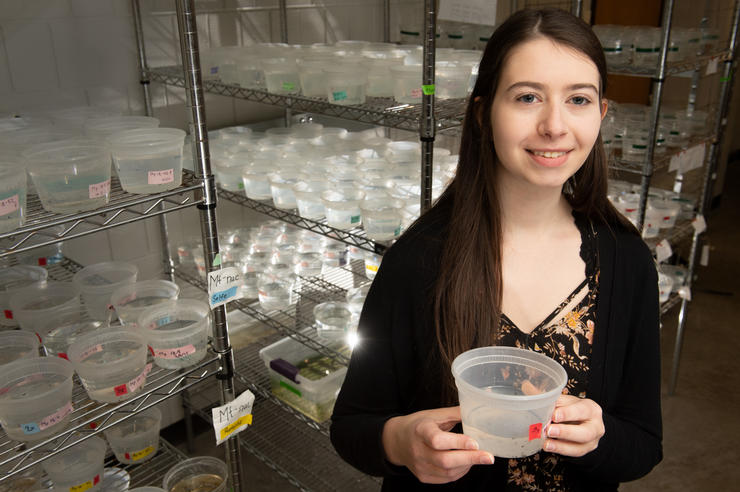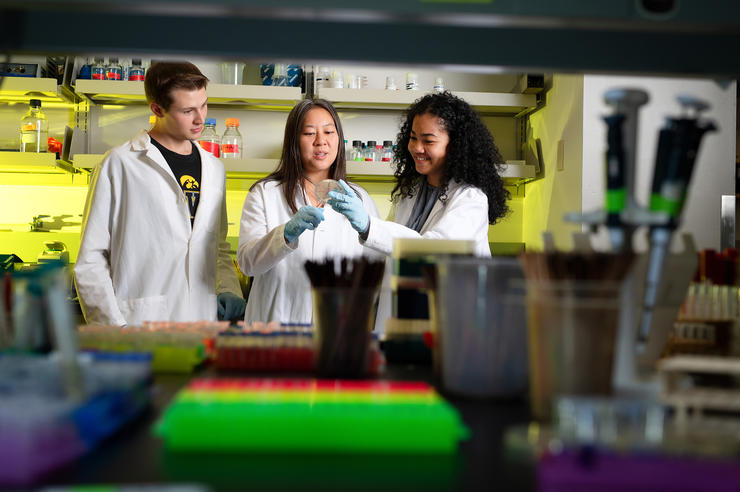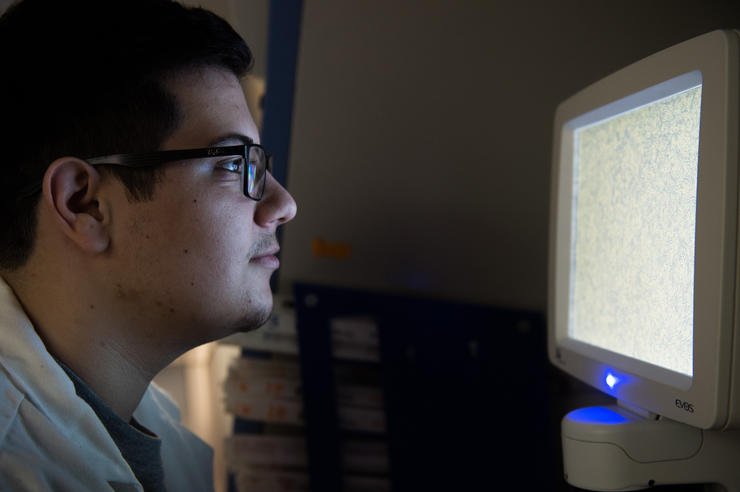Keep on robot truckin’
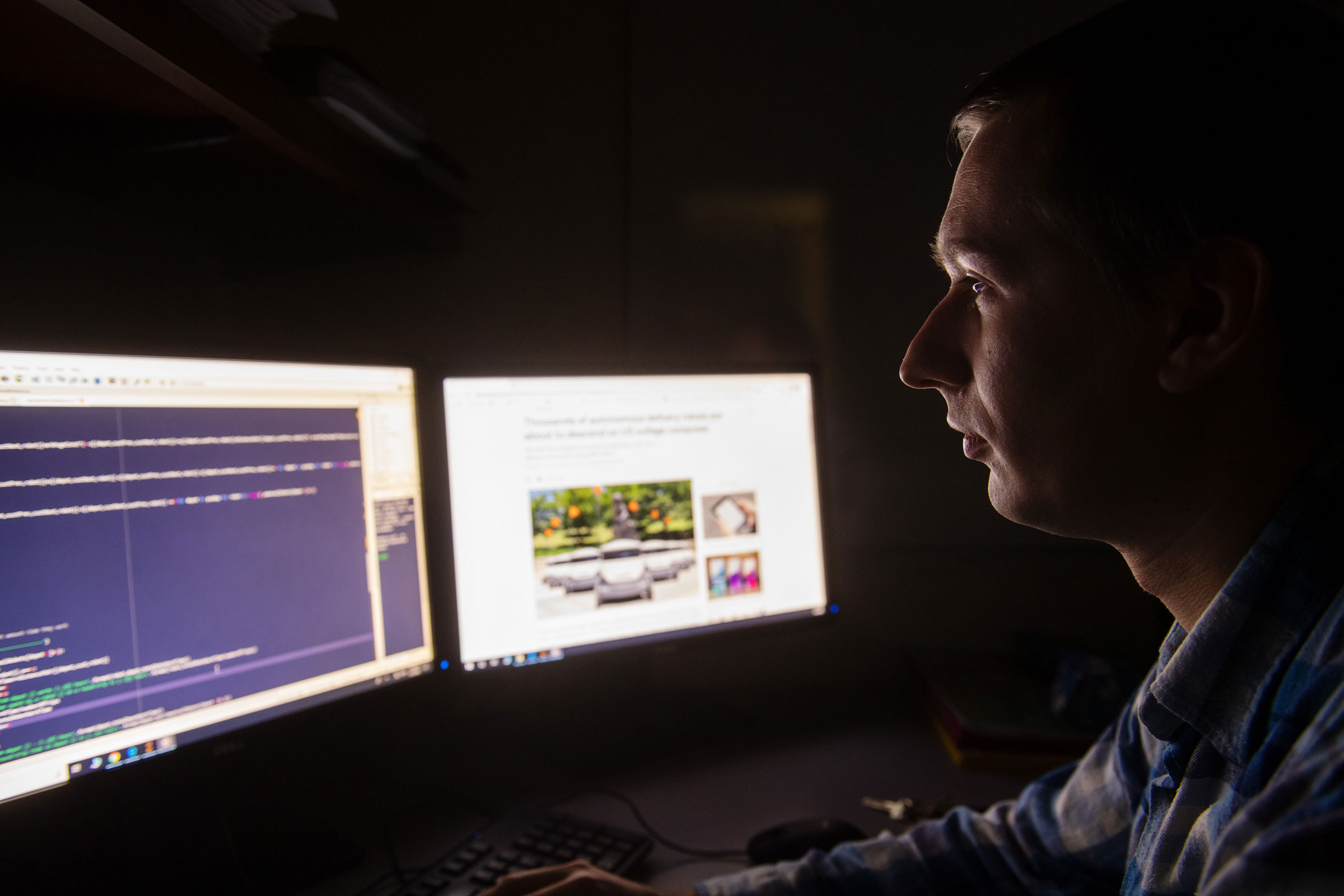
Iurii Bakach’s research is about finding the most efficient way to move cargo from one place to another—which makes sense, since his father owned a trucking business in his hometown of Odessa, Ukraine. He started it not long after the collapse of the Soviet Union and built it into a thriving company.
“I’ve been watching vehicles my whole life,” says Bakach, now a doctoral student in applied mathematics and computational science at the University of Iowa.
But the vehicles he researches today are nothing like what his father imagined. His work focuses on robot vehicles equipped with artificial intelligence that deliver packages to peoples’ homes. The work is increasingly important; more and more people shop online, and trucking companies have to deliver this growing amount of cargo with a limited number of vehicles and drivers.
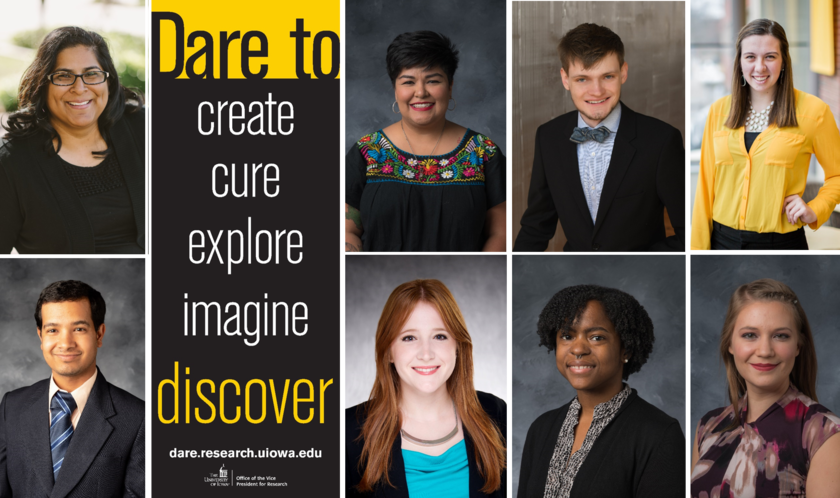
Iurii Bakach is one of 52 students featured in the University of Iowa’s Dare to Discover campaign highlighting researchers across campus.
“It’s hard for a delivery truck to be at multiple places at 4 p.m.,” says Ann Campbell, Tippie Research Professor of Business Analytics in the Tippie College of Business and Bakach’s doctoral adviser. “But with a set of robots, deliveries can occur in multiple places at 4 p.m. Iurii’s research will help those companies more efficiently use their resources to meet customer expectations.”
The increased use of e-commerce is already putting stress on trucking companies, who report chronic driver shortages at a time when they’re making more deliveries than ever. Bakach says that trend is only expected to continue, so developing robotic forms of delivery will help fill the gaps.
The logistics of delivering packages are incredibly complicated and can be influenced by hundreds of factors. Companies hire staffs of analytics experts who build algorithms for truck routes to make sure those 4 p.m. deliveries happen at 4 p.m. They take into account things like expected traffic, weather patterns, time of day, construction projects, the size of the deliveries, the number of left turns a delivery truck has to make, and any number of other factors to route their trucks to their destinations.
But any number of unexpected factors can also mess up these schedules, which is one reason why customers are so often waiting for their 4 p.m. delivery at 5 p.m. Unexpectedly heavy traffic, bad weather, or a chatty customer who wants to talk with the driver can add time and delay subsequent deliveries. Even hitting more red lights than expected can cost time.
The vehicles that Bakach studies can help because dozens can be deployed at once, and they’re available at any time of day. They are simple in concept, little more than boxes on wheels, only about three or four feet high and wide, propelled by six tires along sidewalks at breakneck speeds of up to 2 mph. They’re already in use, including at some U.S. universities, where they make deliveries between campus buildings. They’re also being used in China to transport materials in regions that have been quarantined by the coronavirus and people aren’t allowed to leave their homes.
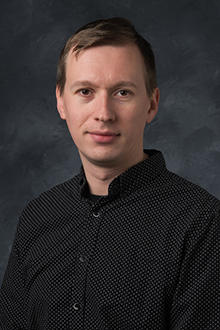
“Iowa encouraged interdisciplinary study more than any other university I looked at.”
But they’re used most extensively in the English town of Milton Keynes, where a pilot project has the robots navigating suburban streets and sidewalks. Mapping and artificial intelligence systems guide them to their destinations, finding alternative routes if they encounter roadblocks. They stop at red lights and stop signs, and if pedestrian traffic is too heavy, they automatically stop until it thins out. When they complete their delivery, they return to their depot for the next.
The robot trucks operate out of small local hubs located around town, where they pick up deliveries that are left by conventional trucks. Bakach’s work develops an algorithm that shows delivery companies where they should locate these depots to serve an optimal number of people and that can be reached most efficiently by the delivery robots.
The concept benefits both delivery companies and customers. The companies can make more efficient use of their drivers, requiring them to drive only to these local hubs, instead of from house to house. That cuts the number of stops, saves money on fuel, and reduces the likelihood of encountering a delay. That also leaves more time for drivers to home-deliver large packages that won’t fit in the robots, or to areas that aren’t served by robots.
For the customer, the benefits are convenience and security. With a robot, that 4 p.m. delivery arrives at 4 p.m., give or take a few minutes. If a customer isn’t available until midnight, then the robot can make the delivery at midnight, long after human drivers have clocked out. It’s more secure, too, because the customer will be home to open the box and take the package out. That means no more packages stolen by porch pirates after being left by a driver because nobody was home.
Bakach says most major delivery companies are developing robot delivery systems like this, and many will have their own fleet of robots at work soon. The kind of research he’s producing is needed to help move that development forward. How do factors like the length of a city block or the number of traffic lights encountered impact a robot’s delivery time? How about if the delivery address is in a place that robots can’t reach, such as up a flight of stairs or in a high-rise building? What impact does time of day make? These are all questions that Bakach’s research is seeking to answer.
A mathematician with a background in public health, Bakach came to Iowa after earning a master’s degree in mathematics and epidemiological modeling from Georgia Southern University. He picked Iowa for his doctoral work because the university provides myriad opportunities for interdisciplinary study. That’s allowed him to cross disciplinary and collegiate lines regularly, especially between the Department of Mathematics in the College of Liberal Arts and Sciences and the Department of Business Analytics in the Tippie College of Business.
“Iowa encouraged interdisciplinary study more than any other university I looked at,” he says.
Bakach has a job lined up in Hartford, Connecticut, with the analytics department of The Travelers Insurance Co. after graduation.
